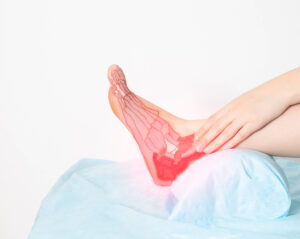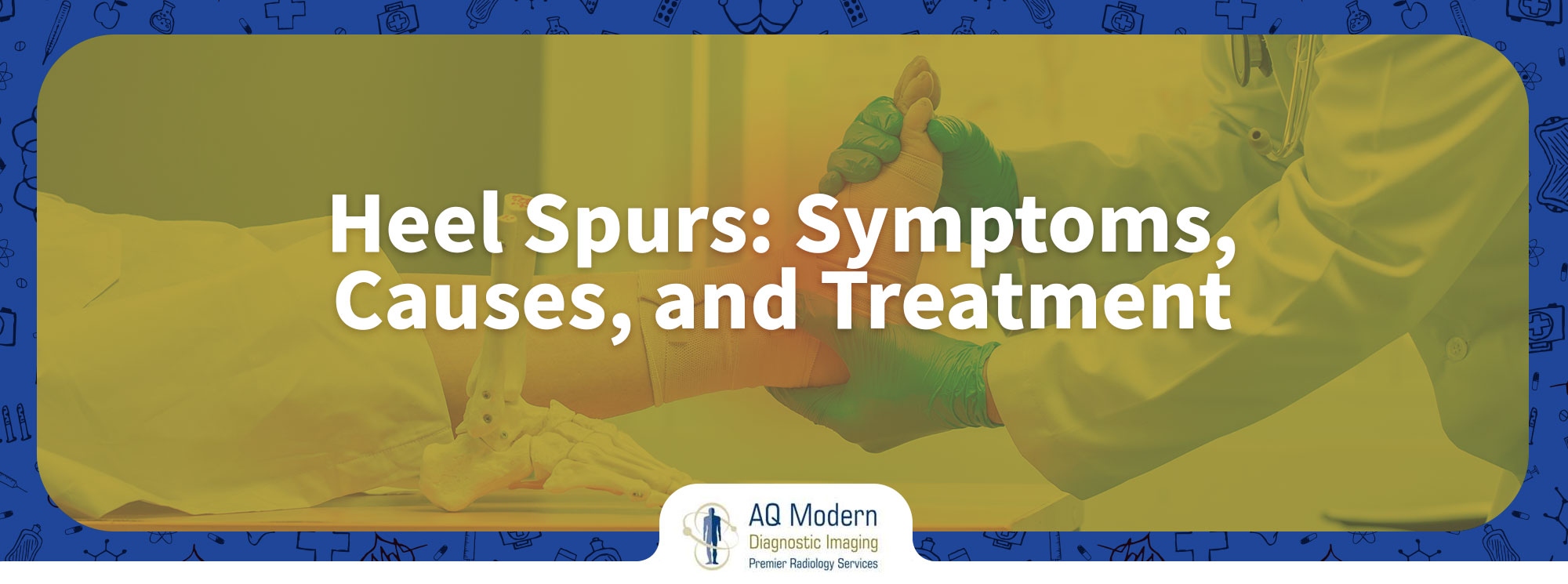Experiencing foot pain is likely due to a heel spur. A heel spur is a bone growth that occurs due to calcium deposit, or it could be due to plantar fasciitis.
A bone spur in the heel can be challenging to detect as it is not visible to the naked eye. A heel spurs x-ray helps reveal whether you are suffering from the condition. Most people remain unaware that they have developed a heel spur because they don’t experience any pain. Nevertheless, you may need treatment as it may affect other parts. Read on below to learn more about heel spur treatment and what causes them.
What are Heel Spurs?

A heel spur, also known as a bone spur, occurs at the base of the heel due to the protrusion of bone caused by a calcium deposit. The growth occurs at the intersection of the heel bone to the ligament that runs between the heel and the ball of the foot. The protrusion can be as much as half an inch on an x-ray. The condition is more common in older people, and a heel spurs x-ray is necessary for detection.
How is a Heel Spur Different from a Plantar Fasciitis?
A heel spur can be confused with plantar fasciitis; however, there is a key difference between both. A heel spur is caused in reaction to plantar fasciitis. On the other hand, plantar fasciitis is a condition that occurs as the plantar fascia experiences stretch or a tear due to overuse.
Anyone having a heel spur may or may not experience pain, but plantar fasciitis causes a piercing pain in the heel that comes and goes. It may ease as you walk but will return as you sit back.
What are the Symptoms of Heel Spurs?

A bone spur in the heel can cause inflammation or pain. You may even experience swelling at the foot of your heel. Upon touch, the area surrounding it may feel warm. These symptoms can affect the arch of your foot as well. However, not all people may experience these symptoms, nor experience any pain.
What Causes Heel Spurs?
A common cause of heel spurs is continuous strain experienced by the ligaments and tendons of the foot. The wrong shoe size or uncomfortable shoes can be a leading cause of the strain. Prolonged walking or running can also lead to excessive stress, which causes a heel spur in the long run. Heel spurs may also develop due to excessive body weight, arthritis, or bruising of the heel.
It can also be in response to the stress experienced by the body due to another condition. For instance, in the case of developing plantar fasciitis, your body may react by creating a heel spur due to the stress it experiences.
Another reason for a bone spur in the heel to develop is due to continuous tearing of the covering lining the bone of the heel. The development of a heel spur could also be due to a gait disorder.
Heel Spur Treatment:

A heel spur does not appear suddenly. It often develops over time due to continuously ignoring early symptoms like heel pain. If you’re continuously having pain in your heel, getting a heel spurs x-ray is important.
As a heel spur often occurs in response to plantar fasciitis, treating the main cause will also treat heel spurs. This means undergoing surgery, which is often recommended when the condition is ongoing, and the pain becomes severe.
However, if the bone spur in the heel is due to another reason, there are other calcaneal spur treatments that you can try. These include as follows:
Rest:

Rest is one of the most commonly recommended treatments for heel spurs. Long hours of standing or other activities can cause pain, and it is important to rest your feet if you’re experiencing acute pain. Not resting if you’re suffering from heel spurs can worsen the condition and lengthen your recovery period.
Exercise:


Physical therapy and stretching exercises are other calcaneal spur treatment options. A physical therapist can help you and show you exercises that stretch the plantar fascia and heel muscles.
Stretches can help release the pain and are best done before bedtime. Since there is little harm in performing stretches and can be continued for a long time, it’s often recommended for heel spur patients instead of pain medications.
Use of Cold Packs:

Cold packs can offer relief by numbing the area if you use them daily for 15 minutes. However, this pain relief will be temporary but may help reduce swelling. Cold packs are also recommended because they’re better for muscle and joint aches.
Using Orthotic Shoe Inserts:

Our feet need proper support. You can use orthotic shoe inserts such as heel pads that provide support to the arch and heel. It can contribute to reducing the pain and further wear and tear. Orthotic shoe inserts should be used with the right footwear for optimal foot comfort and protection.
In Conclusion
Heel spurs are often in response to another condition. However, they are not visible by the naked eye, and a heel spurs x-ray is essential for its detection. Anyone experiencing constant heel pain should not ignore it and find out the cause of the pain.
Heel spur treatment includes a variety of ways that help alleviate the pain. In cases where it is caused by plantar fasciitis, surgery is the last resort to treat the pain. Other methods of treatment recommended by physicians include doing stretches, resting, using a cold pack, or taking over-the-counter pain medication.
In essence, one should wear the right sized and comfortable shoes that do not cause strain on the foot heel. Resting after long periods of standing and experiencing exhaustion after excessive running or walking is also recommended.

